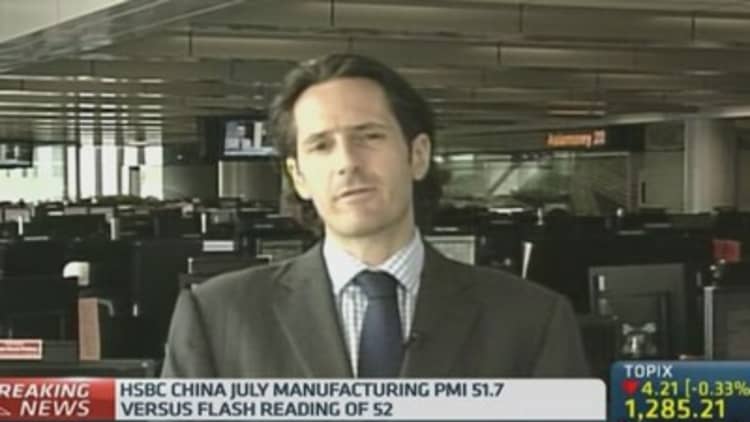The has rebounded to a 4-1/2-month high against the greenback amid an upswing in the world's second-largest economy, raising the question of whether the currency can continue the trajectory even as the Fed tightens the screws on monetary policy.
Since falling to year-to-date lows of 6.258 at the end of April, the yuan has strengthened 1.56 percent against the greenback to 6.157, tracking the increasingly robust Chinese economic data.
On Thursday, the yuan traded stronger than the midpoint for the first time since March. The spot rate is allowed to trade 2 percent above or below the midpoint set by the People's Bank of China.
According to Khoon Goh, senior FX strategist at ANZ, the yuan rally has further legs despite the dollar-friendly environment. "We see two sources of further demand for CNY, over and above the normal trade and FDI [foreign direct investment] related demand," he said.

The first is the increased demand for the Chinese currency from businesses in the country, Goh continued, such as exporters who have held a large portion of their earnings in U.S. dollar rather than converting it into yuan.
"The accumulation of foreign currency made sense when there was strong expectation of CNY depreciation. But as depreciation expectations diminish, the pace of FX deposit growth will ease off substantially, as some of those foreign currencies get converted into CNY," said Goh, who expects the currency to end the year at 6.15 – a touch stronger than current levels.
The second source of demand will be through increased foreign portfolio inflows into China, Goh said.
Read MoreMore global firms settling trades in yuan
"Despite China being the second largest economy in the world, foreign investor participation in Chinese assets is low due to capital restrictions. But this is changing as China continues to liberalize its capital account," he said.
Since the introduction of the Renminbi Qualified Foreign Institutional Investor (RQFII) program in 2011, there has been a noticeable increase in foreign inflows, particularly into bonds, according to ANZ. RQFII is a scheme which allows licensed foreign investors to buy and sell yuan-denominated A-shares in China's mainland stock exchanges.

Also helping inflows in the near-term is the Shanghai-Hong Kong Stock Connect, a new trading link that effectively opens up the Chinese equity market to the world, via Hong Kong. Set to operate from October, Connect allows overseas investors to access China A-shares without needing to apply for approval, while mainland investors will be able to trade Hong Kong shares on the Shanghai Stock Exchange.
Read MoreYuan to supersede dollar as top reserve currency: survey
In addition, the yuan is set to benefit as central banks invest more of their foreign currency reserves in China, Goh said.
The Reserve Bank of Australia has publicly disclosed that it now holds around 3 percent of their net foreign reserves in RMB, and other central banks are expected to follow suit over time.
Paul Mackel, head of Asian FX research at HSBC, is also positive on the yuan, forecasting it to rise to 6.14 by year end, as growth stabilizes and foreign exchange flow turn more supportive.
"But appreciation should be increasingly volatile, due to ongoing reforms to make the currency more market-driven, the upcoming shift in the Fed's policy, and the fact that the RMB is no longer undervalued," he wrote in a recent report.


